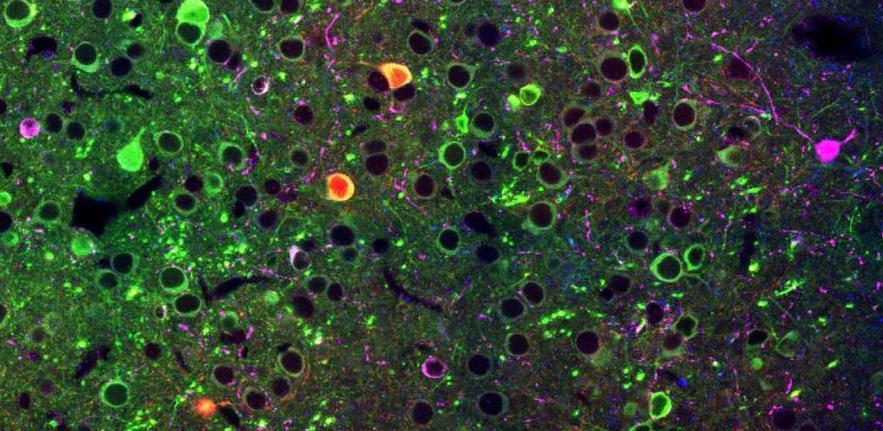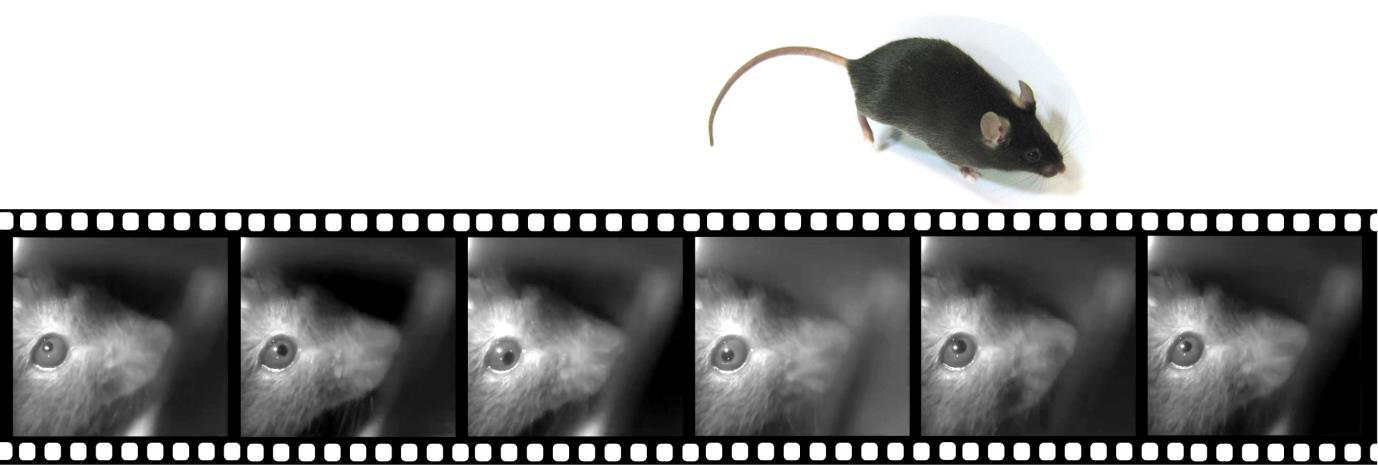
The aim of the Selective Vision Lab, led by Dr. Jasper Poort and based at the Department of Physiology, Development and Neuroscience in Cambridge, is to understand how our brain is able to selectively process that sensory information that is most relevant for decision-making. This capacity is crucial given the constant bombardment of data on our senses and the limited capacity of the brain. Altered selection of information is associated with cognitive deficits observed in neurodevelopmental disorders such as schizophrenia and autism.
|
Opportunities to join our lab:
Please contact jp816@cam.ac.uk with your CV for informal discussions about possible projects and applications |
To increase our understanding of the neural circuit mechanisms that underlie sensory selection, our research is focused on the following topics:

1) The effects of learning on neural activity in early visual areas (specialized in representing detailed feature information) and high-level visual cortical areas (closely linked to decision-making) (Poort et al., Neuron 2015 , Khan, Poort et al., Nature Neuroscience 2018). What are the long-term neuronal response changes when we learn what sensory features are relevant, and how do they improve decision-making? We are particularly interested in perceptual learning, a type of learning that enables us to become visual experts and make discriminations that are impossible for the untrained eye.
2) The effects of attentional selection on neural activity (Poort et al., Neuron 2012, Khan, Poort et al., Nature Neuroscience 2018 , Poort et al., Neuron 2022): what are the neuronal changes in early and high-level visual areas that enable fast and flexible task-dependent selection of information? How are circuits for attention related to circuits for learning?
We study these questions in mice performing visually-guided decisions, taking advantage of similarities between the rodent and primate visual systems, and unique genetic research methods available in mice to dissect neuronal circuits. We collaborate with labs studying learning and attention in primates and humans to drive translation of our research results.
Long-term 2-photon imaging in identified cell-types (using post-hoc immunolabelling) combined with optogenetic cell-type specific targeting allows us to both measure and manipulate specific circuit components to establish their contribution to behaviour. By studying these circuits in both healthy mice and genetic mouse models of schizophrenia, including mouse models of 22q11.2 deletion syndrome (the biggest known genetic risk factor for schizophrenia), we can begin to unravel the conditions that determine both successful and unsuccessful sensory selection.
To generalize our results on learning and attention in controlled visual conditions, we additionally develop new tools to measure both behaviour and neural activity in mice freely behaving in more complex and natural environments (see Meyer, Poort et al., Neuron 2018 and Meyer, O'Keefe, Poort, 2020).

Lab members
- Jisoo Kim, PhD candidate
- Mátyás Váradi, PhD candidate (co-supervisor Prof. Máté Lengyel)
- Lilia Kukovska, PhD candidate (co-supervisor Prof. Zoe Kourtzi)
- Dr Natsumi Homma, Postdoctoral Research Associate (joint position with Ole Paulsen lab)
- Dr. John McClure, Postdoctoral Research Associate
- Dr. Jasper Poort, Group Leader
Publications:
-
Kim, J., Beltramo, R., Poort, J. (2025) Contributions of superior colliculus and primary visual cortex to visual spatial detection in freely moving mice, Biorxiv (preprint) Link to Article
-
González-Rueda, A., Jensen, K., Noormandipour, M., de Malmazet, D., Wilson, J., Ciabatti, E., Kim, J., Wiliams, E., Poort, J., Hennequin, G., Tripodi, M., (2024) Kinetic features dictate sensorimotor alignment in the superior colliculus, Nature, 3 1–8. Link to Article
-
Kukovska, L., Poort, J. (2024) The impact of parvalbumin interneurons on visual discrimination depends on strength and timing of activation and task difficulty, Biorxiv (preprint) Link to Article
- Chadwick, A., Khan, A., Poort, J., Blot, A., Hofer, S., Mrsic-Flogel, T., Sahani, M. (2023) Learning Shapes Cortical Dynamics to Enhance Integration of Relevant Sensory Input. Neuron, 1, 106-120 Link
- Poort, J., Wilmes, K., Chadwick, A., Blot, A., Sahani, M., Clopath, C., Mrsic-Flogel, T., Hofer, S., Khan, A, (2022). Learning and attention increase neuronal response selectivity in mouse primary visual cortex through distinct mechanisms. Neuron, Link to Article, see also preview on article by Jahn, C.I. and Buschman, T.J. ‘In V1, Attending Is Not Learning to See’ (2022) Neuron, 4, 686-697 Link
- Van Beest, E., Mukherjee, S., Kirchberger, L. Schnabel, U.H., van der Togt, C. Teeuwen, R.R.M., Barsegyan, A., Meyer, A., Poort, J., Roelfsema, P.R., Self, M.W. (2021) ‘Mouse Visual Cortex Contains a Region of Enhanced Spatial Resolution’. Nature Communications 12, 4029, Link to Article
- Poort, J., Meyer, A. (2021). Dispatch: ‘Vision: Depth Perception in Climbing Mice’. Current Biology 31, R486–88. Link to Article
- Meyer, A., O'Keefe, J., Poort, J., (2020). Two distinct types of eye-head coupling in freely moving mice, Current Biology, 11, 2116-2130. Link to Article, see also dispatch on article by Kautzky, M. and Busse, L. (2020) ‘Vision: How Mice Control Their View’. Current Biology Link .
- Self, M.W. , Jeurissen, D., van Ham, A.F., van Vugt, B., Poort, J., Roelfsema, P.R. (2019) The segmentation of proto-objects in monkey primary visual cortex, Current Biology, 6, 1019-1029. Link to Article
- Meyer, A.F.*, Poort, J.*, O'Keefe, J., Sahani, M., Linden, J.F. (2018) A head-mounted camera system integrates detailed behavioral monitoring with multichannel electrophysiology in freely moving mice. Neuron, 10, 46-60. (* equal contribution) Link to Article Free & open-source repository to build head-mounted camera system for mice: https://arnefmeyer.github.io/mousecam/
- Khan, A.*, Poort, J.*, Chadwick, A.*, Blot, A.*, Sahani, M., Mrsic-Flogel, T., Hofer, S. (2018). Distinct learning-induced changes in stimulus selectivity and interactions of GABAergic interneuron classes in visual cortex. Nature Neuroscience, 21, 851-859. (* equal contribution) Link to Article
- Poort, J.*, Self, M.W. *, van Vugt, B., Malkki, H.A.I., Roelfsema, P.R. (2016). Texture segregation causes early figure enhancement and later ground suppression in areas V1 and V4 of visual cortex. Cereb. Cortex, 26:3964–3976. Corresponding author. (* equal contribution) Link to Article
- Poort, J. *, Khan, A.G. *, Pachitariu, M., Nemri, A., Orsolic, I., Krupic, J., Bauza, M., Sahani, M., Keller, G., Mrsic-Flogel, T.D., and Hofer, S.B. (2015). Learning Enhances Sensory and Multiple Non-sensory Representations in Primary Visual Cortex. Neuron 86, 1478–1490. (* equal contribution) Link to Article
- van Kerkoerle, T., Self, M, Dagnino, B., Gariel, MA., Poort, J., van der Togt, C., and Roelfsema, P.R. (2014) Alpha and gamma oscillations characterize feedback and feed-forward processing in monkey visual cortex. Proc. Natl. Acad. Sci. USA, 111, 14332-14341. Link to Article
- Pooresmaeili, A., Poort, J., Roelfsema, P.R. (2014) Simultaneous selection by object-based attention in visual and frontal cortex. Proc. Natl. Acad. Sci. USA. 111, 6467–6472. Link to Article
- Poort, J., Raudies, F., Wannig, A., Lamme, V.A.F., Neumann, H., Roelfsema, P.R. (2012) The role of attention in figure-ground segregation in areas V1 and V4 of the visual cortex, Neuron, 75, 143-156. Link to Article
- Poort, J., Pooresmaeili, A., Roelfsema, P.R. Multi-neuron representations of visual attention (2011). Chapter 3 in Understanding visual population codes: towards a common multivariate framework for cell recording and functional imaging. Editors Nikolaus Kriegeskorte and Gabriel Kreiman. MIT Press. https://mitpress.mit.edu/books/visual-population-codes
- Schoffelen, J-M., Poort, J., Oostenveld, R. and Fries, P. (2011). Selective movement preparation is subserved by selective increases in cortico-muscular gamma-band coherence. J. Neurosci., 31, 6750-6758. Link to Article
- Pooresmaeili, A., Poort, J., Thiele, A. and Roelfsema, P.R. (2010). Separable Codes for Attention and Luminance Contrast in the Primary Visual Cortex. J. Neurosci., 30, 12701-12711. Link to Article
- Poort, J. and Roelfsema, P.R. (2009). Noise Correlations Have Little Influence on the Coding of Selective Attention in Area V1. Cereb. Cortex, 19, 543-553. Corresponding author. Link to Article
Funding:
Our research is funded by the Wellcome Trust, the Royal Society, and the Medical Research Council.

